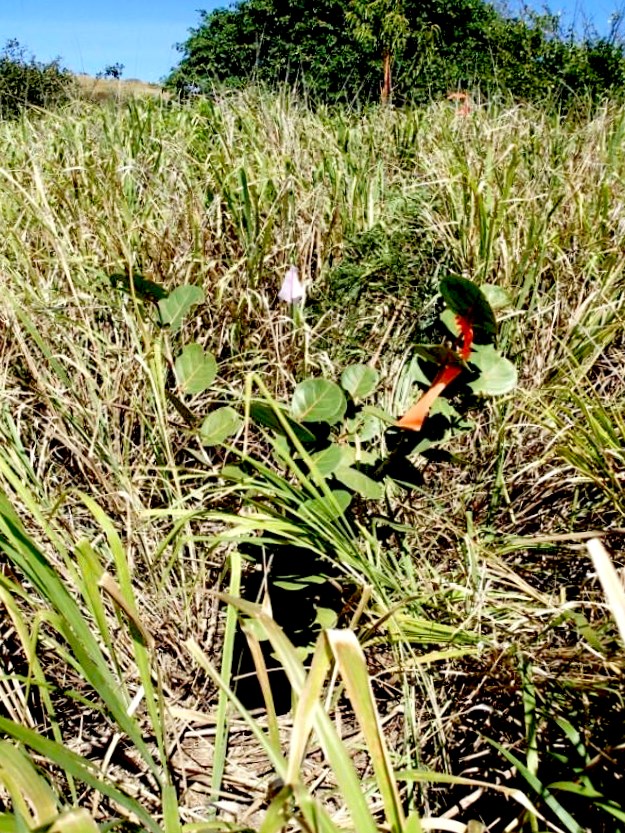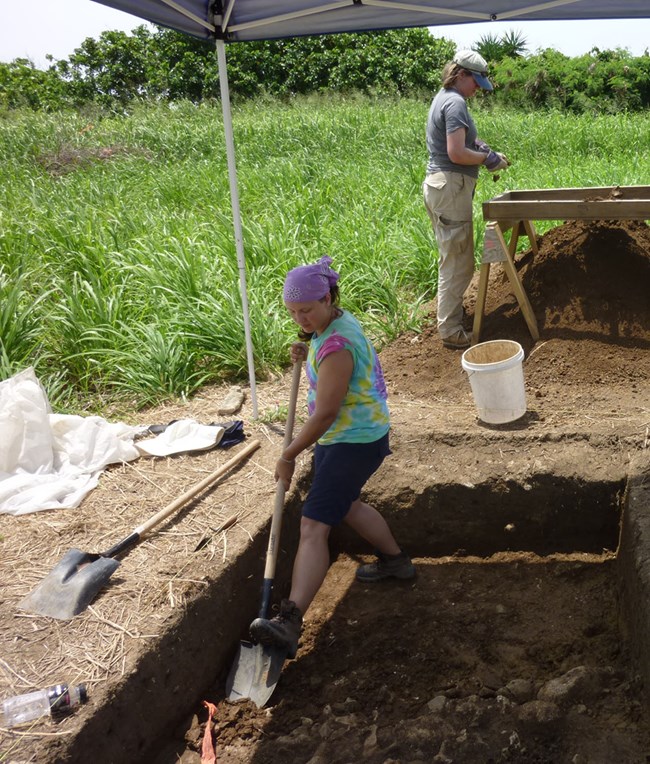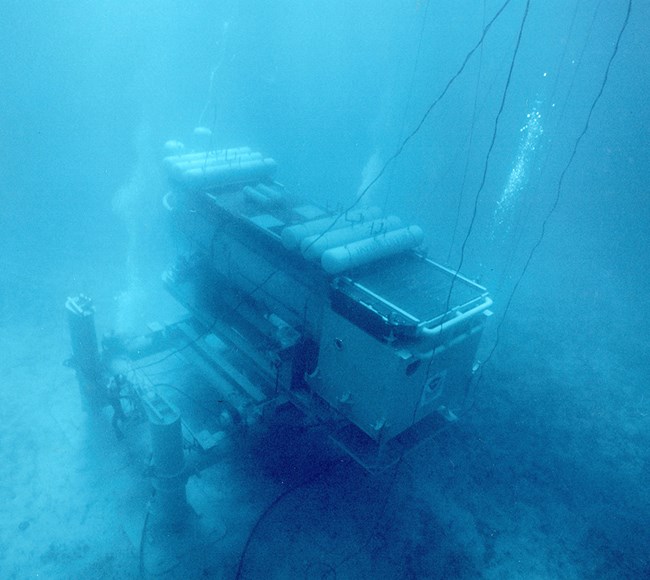
NPS photo Native Plant RestorationSince 2012, SARI has been working to restore the plant native communities within 72 acres along the eastern shore of Salt River Bay. Over the past 50 years the area has been subjected to numerous discarded landscape plants and cuttings being thrown into “the bush,” resulting in a thriving community of invasive, exotic plants. Efforts to restore the native habitat began as a collaboration between the NPS-SARI, the US Fish and Wildlife Service, Florida Caribbean Exotic Plant Management Team, and NPS Youth Conservation Corps. To date over 1000 locally-grown native plants have been planted in the park. Non-native plants, such as guinea grass, tan-tan, rubber vine or purple allamanda, and Ginger Thomas, are targeted for removal and destruction while native trees, shrubs, and grasses are planted to improve erosion control and plant diversity.Treatment within 50 feet of mangroves and shoreline are treated via mechanical removal, hand pulling, cutting with weed eaters, and mowing/mulching in place. Outside of the shoreline area, the plants are removed via mulching and mowing, and treatment of stem and new growth grasses with approved herbicides. No herbicide application will occur if rainfall is anticipated within 30 minutes of application. The NPS is committed to maintaining and enhancing the natural beauty and health of our environment, and to the preservation and stewardship of the cultural resources of Salt River Bay through increased awareness and education. We look forward to continuing these efforts with our neighbors and partners. Here is more information about the South Florida and Caribbean Exotic Plant Management Plan. 
NPS photo 100+ Years of ArcheologySince the 1880s, archeologists from around the world have been interested in the archeological heritage of Salt River Bay. From ancient villages of fishers and farmers to Taino stone-lined ball courts, earthen forts, and historic agricultural plantations, the archeological sites surrounding Salt River Bay encompass nearly every human occupation of St. Croix since ca. A.D. 400. 
NPS photo HydrolabIn 1977, the National Oceanic and Atmospheric Administration (NOAA) refurbished its staturation diving habitat HYDROLAB and relocated it from the Bahamas to the head of the Salt River canyon. Originally built in 1966, the facility had been moved and refurbished several times. Sitting 50 feet below the surface, and measuring only 16 feet by 8 feet, weighing 60 tons, it housed teams of four researchers for five to seven days at a time. At the end of each stay team member had to endure 16 ¼ hours of decompression. The HYDROLAB was operated under contract for NOAA by the West Indies Laboratory of Fairleigh Dickinson University. The NOAA property at Salt River also contained a small laboratory and living quarters, located on Triton Peninsula.
|
Last updated: April 24, 2018
